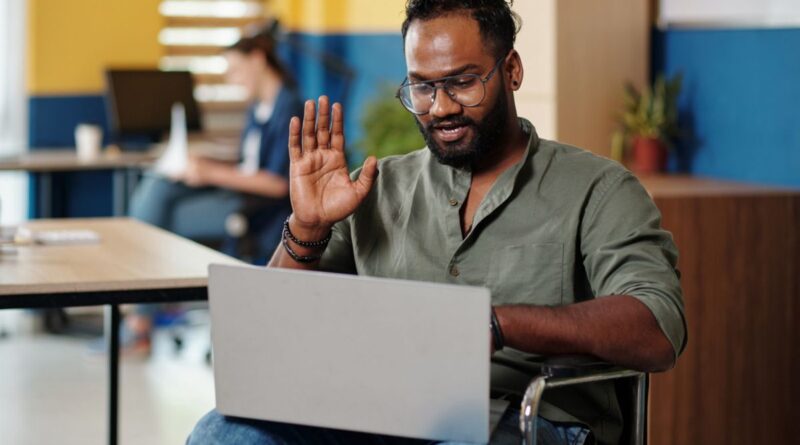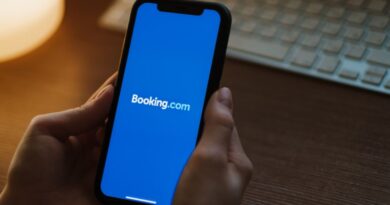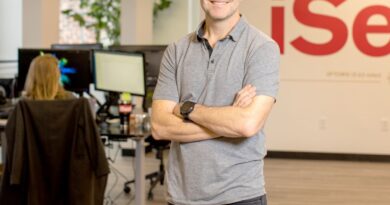Beeyonder sees future for virtual tours despite Heygo shuttering
[ad_1]
Virtual tours business Beeyonder said in a recent blog post that the news of another virtual tours company Heygo’s shuttering “has sparked conversation about the future of virtual travel outside of COVID.”
Although Brittany Palmer founded Boston-based Beeyonder at the height of the pandemic in 2020, the startup’s focus “was really on the 50-plus million people in just the [United States] that have limited mobility or other conditions that prevent or inhibit travel – regardless of COVID.”
Palmer, who is founder and CEO, said she loves to travel but has a disability and some joint issues that make some types of experiences difficult to partake in. Beeyonder’s virtual travelers need a laptop and a Zoom account.
Subscribe to our newsletter below
Palmer saw that it would be difficult to compete with B2C companies such as Heygo, which were offering tours at no cost.
“We found our niche in the B2B side serving senior groups, corporate groups, nonprofits and now schools,” Palmer said. “And we’ve seen the benefits of that in all of these different areas that have nothing to do with the pandemic.”
So what happened at Heygo?
At some point you have to make a responsible call, said John
Tertan, founder and CEO of Heygo, which shut down just over
a year after landing
a $20 million Series A funding round.
The London-based company, which employed 15 full-time
employees, “tried loads of different things, and nothing was really moving the
dial,” Tertan said.
“It’s been a process,” he said. “It wasn’t like yesterday we
just said, ‘Let’s return capital.’ It was a fairly committed process where we
really tried to iterate on product as much as possible” to achieve “sustained,
meaningful growth.”
Founded in 2020, Heygo offered tours that were free to stream. The money came from tips, of which guides kept 60% and the business kept the rest in
commission.
Heygo ruled out prepaid tours early on because people can
get them for free on YouTube. The company tried monthly subscriptions, but they
had limited uptake.
The startup plateaued for more than a year post-COVID at
around $1.2 million annual gross tips, a couple million bookings a year and about
300,000 registered users, according to Tertan.
“About a month or so ago, I sat down with my investors to
say … we can keep going because we have loads of cash in the bank. That
was never the problem. But the odds of us getting to the expectations that they
had of the business [were] continuously decreasing.”
The problem became more acute in recent months, “and that’s
why it just felt to return capital is the most responsible thing. We can continue
spending the money, but we’re not doing it efficiently enough.”
Tertan attributed the company’s downfall to market size turning
out to be much smaller than he’d assumed it would be once people returned to in-person
travel.
“The market size [during COVID] was much bigger than what it
was after COVID went away,” Tertan said. “People really liked the product and
the experience,” he said. “It was a market problem.”
The company wrapped up with more than 300,000 reviews with a
4.8 out of five rating, according to Tertan.
“We did a lot of good,” he said. “A lot of people were able
to make ends meet and also stay in an industry that they really loved” in light of pandemic restrictions on live tours; at its peak the company had more than
500 active guides. And Heygo gave people with disabilities or limited financial
means “some really special moments.”
“So there is a lot of positive,” Tertan said, “even though it’s
really sad.”
The pandemic also helped Beeyonder recruit
guides who were looking for alternative ways to make a living and gain a global
reach, according to Palmer. Beeyonder charges a 20% commission, half of what Heygo charged.
And unlike Heygo, Beeyonder has found that the pre-paid
model is largely what makes it sustainable. Companies pay corporate rates for tours,
and Beeyonder offers lower pricing that guides can opt into for senior
groups, schools and nonprofits.
The number of tours given through Beeyonder more than doubled from 2021 to 2022, according to Palmer.
Guides are “making good money from these
tours, and they’re being fairly compensated, which we feel is really important
for supporting individuals and their communities,” Palmer said.
“With us they can make more money in an
hour sometimes than they could in a full-day, in-person tour,” she said, “so …
the terms that we’ve provided and our pricing makes it very favorable for them
to continue to do virtual tours as well as in person.”
Another point that sets Beeyonder apart,
Palmer said, is the interactivity: People taking the private tours can talk to
guides in real time.
[ad_2]
Source link



